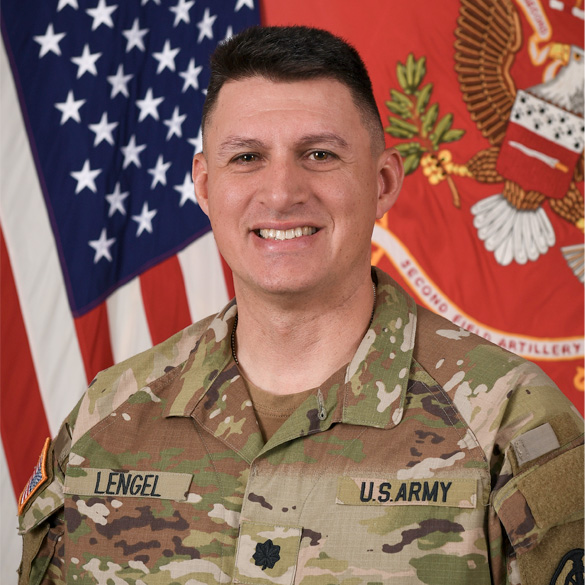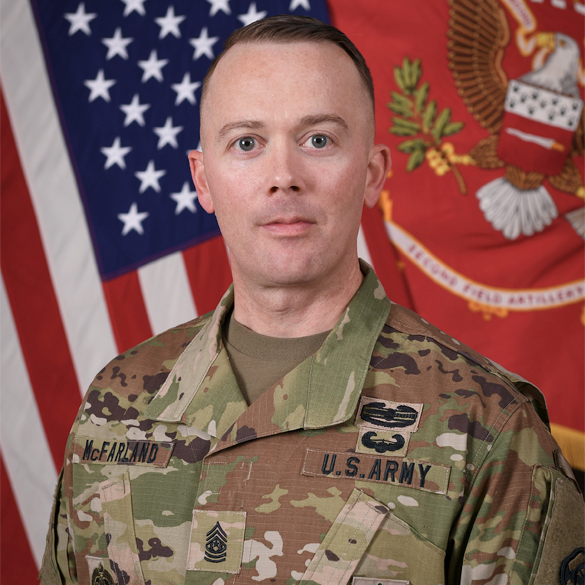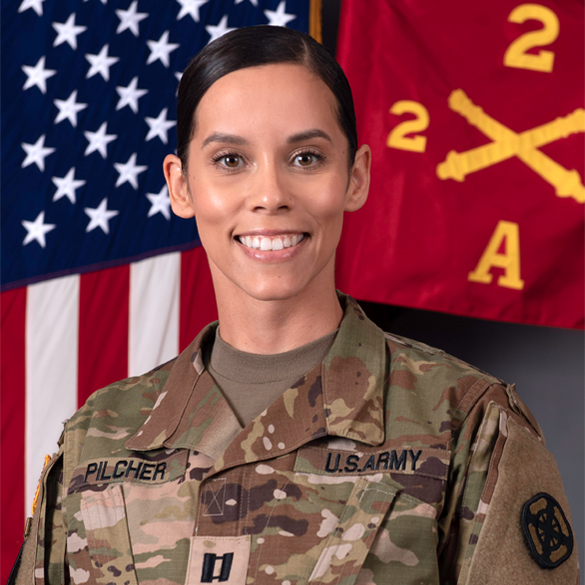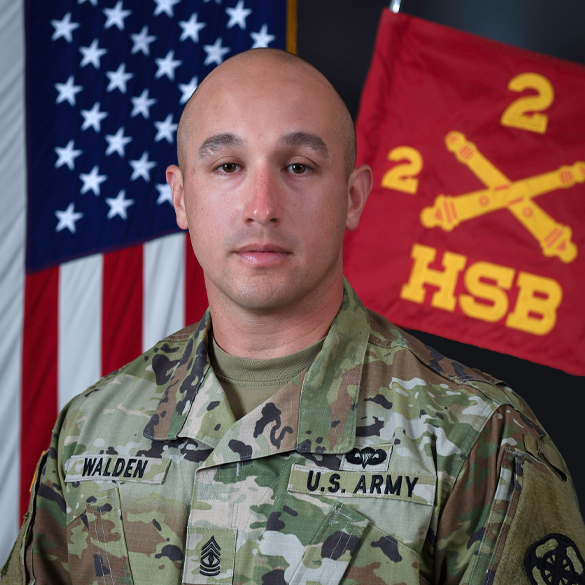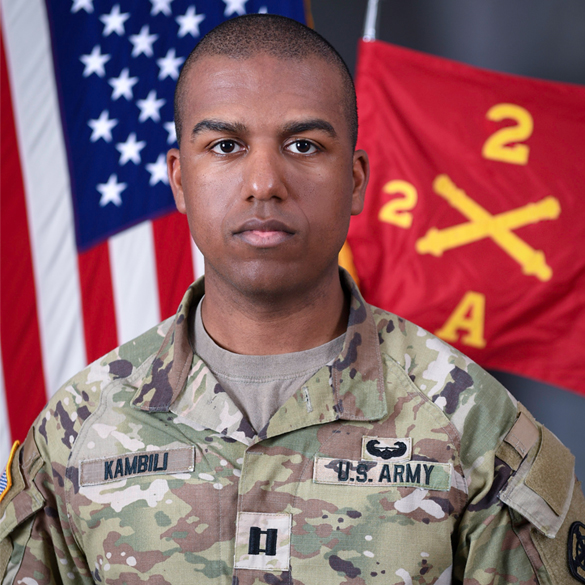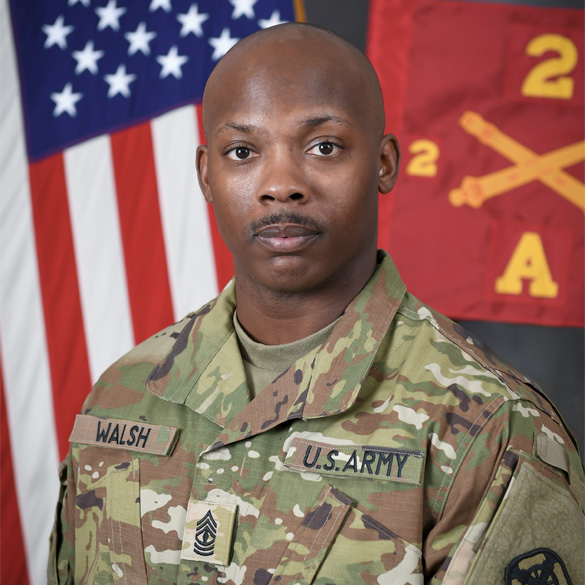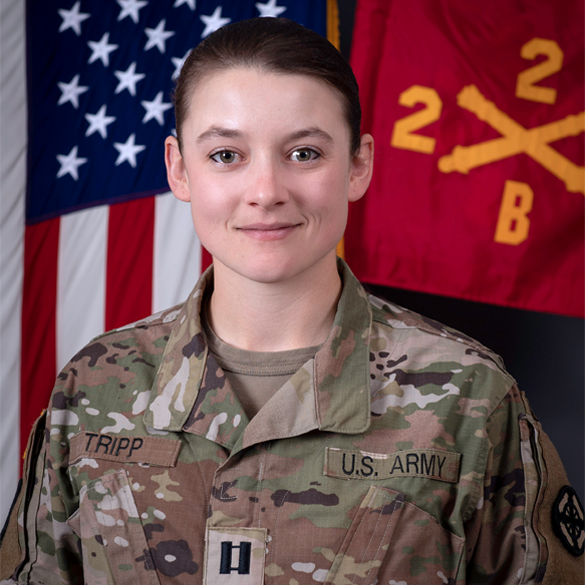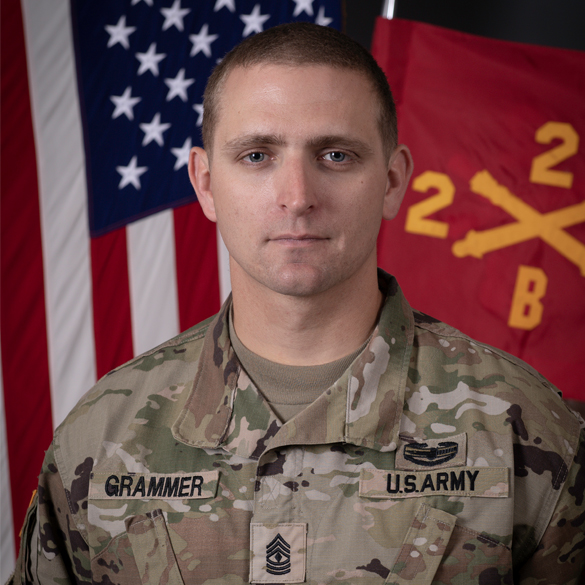2-2 Field Artillery Battalion
"Big Deuce"
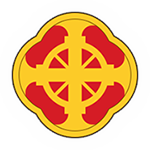
Mission Statement
2-2 FAR delivers fires and conducts logistics operations in support of the United States Army Field Artillery School and the Fires Center of Excellence to enhance fires force readiness throughout the operational U.S. Army and USMC. O/O, 2-2 FAR executes ceremonial requirements in support of the Fires Center of Excellence.
Welcome to the “Big Deuce” Battalion!
Congratulations on your assignment to the 2nd Battalion, 2nd Field Artillery Regiment, the 428th Field Artillery Brigade, the Fires Center of Excellence (FCoE), home of the Field Artillery. We are glad you are joining the “Big Deuce” Team and look forward to your arrival.
Our Battalion is the only direct support light howitzer Battalion at Fort Sill, Oklahoma consisting of a Headquarters and Service Battery (HSB) and two M119A3 howitzer Firing Batteries, which are comprised of approximately 200 remarkable Soldiers, NCOs, Officers, and Civilians.
The Battalion’s mission is to deliver fires and conduct logistics operations in support of the United States Army Field Artillery School (USAFAS) and FCoE to enhance fires force readiness throughout the operational U.S. Army and U.S. Marine Corps, and on order, executes ceremonial requirements in support of the FCoE.
The operational tempo in our Battalion is extremely fast-paced year-round due to the firing of more than 60,000 105mm artillery munitions annually, which is more than any other Field Artillery unit in the Army. As you can imagine, shooting this many rounds in support of the USAFAS and FCoE makes for a very busy, but rewarding environment.
Consequently, we place a great deal on taking care of our Soldiers and their Families and Friends (People First), prioritizing safety, WINNING as a Team, and having fun by embracing our responsibilities with enthusiasm and optimism.
You should report to this outstanding unit physically fit, mentally tough, and prepared to follow proudly in the footsteps of the Big Deuce Soldiers who preceded you. Your entire chain of command is ready to assist you and your family's integration into the Battalion. I encourage you to check us out on Twitter @BigDeuce2_2FAR, Facebook @BigDeuceBattalion, and Instagram @bigdeucebattalion.
You will be hearing from your sponsor soon who will be able to answer any questions that you may have regarding this assignment. Your sponsor has the experience of living in the Fort Sill area and will assist you and your family during your transition. Until then, if you have any specific concerns, please contact the Battalion S1 at 580-442-2355/3592. The Staff Duty phone number is 580-442-5781.
We look forward to meeting you and having you join the “Big Deuce” Team!
BN 180 Day Integration
BN In-Processing Checklist
CIF In-Processing Checklist
Fort Sill In-Processing Checklist
BDE HQ Strip Map
Fort Sill Visitor Map
Sponsor Checklist
| BN CDR | (580) 442-4339 |
| BN CSM | (580) 917-9343 |
| BN XO | (580) 442-8984 |
| S1 Personnel | (580) 442-2355/1796 |
| S3 Operations | (580) 442-1746 |
| S4 Logistics | (580) 442-7942 |
| S6 Commo | (580) 442-7942/1744 |
| BN/BDE Staff Duty Desk | (580) 442-2803 |
| BDE Chaplain | (580) 919-6403 |
| 2-2 FA HSB BTRY | (580) 442-2825 |
| 2-2 FA A BTRY | (580) 442-4812 |
| 2-2 FA B BTRY | (580) 442-6223 |
The Second Field Artillery Regiment is among the oldest units in the United States Army. Military historians mark the period between the Spanish-American War and WW I as the dark-ages for the United States Army. This is noticeable in the fact that when the Second was designated in 1907, there were only six field artillery units consisting of 150 artillery pieces. This is the humble beginning of the Second Field Artillery Regiment.
Duty in the Philippines-In 1901, Regimental designation of artillery units was dropped and Corps organization was adopted. At that time, the 17th and 18th Batteries, Field Artillery were formed and later became a part of the Second Regiment. From 1903-1905, renegade bands of Moros disputed the authority of the U.S. Military Government in the Philippines. The Moros would strike military installations and retire back into the safety of the jungle. The two batteries sought out and destroyed the Moro's jungle strongholds and helped quell the uprising. The Second Regiment earned three battle streamers for its actions in the Philippines. It is because of these actions the Regimental Coat of Arms bears a kris that was the curved blade dagger of the Moro warriors.
The Second Field Artillery Regiment was stationed in Panama on April 30, 1930 at Fort Davis, Canal Zone. Many of the Battalion's tradition comes from this period. The Regiment spent most of its time conducting arduous jungle maneuvers. From 28 March to April 1934 with over 450 Soldiers and nearly 400 mules, under the battalion command of Lieutenant Colonel Edmund Gruber, the composer of the Caissons Song, the Second crossed the difficult terrain of the Isthmus jungle from one coast to the other (a distance of 65 miles) in just five short days. In 1940, the Second did it all again in just four days! Alpha Battery won the prestigious Knox Trophy in 1939. After the attack on Pearl Harbor, the Second took to the jungle to reconnoiter the area since the Canal was a prime target.
In 1943, the Second returned to the United States. It was divided to form cadres for the 274th, 275th, and 276th Field Artillery Regiments at Camp Shelby, Mississippi. The former redesignated as the Second Field Artillery Battalion on 9 July 1944, the unit landed in Liverpool, England in preparation for the invasion of France. The Second Field Artillery Battalion served with distinction in the campaigns of Northern France, Central Europe, and the Rhineland. The Battalion arrived in France at Utah Beach on 16 August 1944 and was assigned to VIII Corps, 3rd United States Army. The Battalion fired its first round at Dirnon, France on 22 August 1944. During the reduction of Brest, the Battalion reinforced the fires of the 2nd and the 8th Infantry Divisions. The Battalion earned its fifth, sixth, and seventh streamers for actions in Central Europe.
The Battalion returned to the United States and was inactivated on 29 March 1946 at Camp Kilmer, NJ, but was again activated at Fort Sill, OK on 1 August, 1946. The unit served as school troops for the Artillery Center until it was redesignated Second Rocket Field Artillery Battalion on 20 January 1948 and was stationed at Fort Bliss TX, with A Battery remaining at Fort Sill OK. The Second Field Artillery Battalion was one of the last segregated, all-black combat units in the Army. On 25 June 1958, the Second Field Artillery Battalion was redesignated the Second Howitzer Battalion (105mm), Second Field Artillery on the 23 June 1958. On 5 February 1991, the Second Field Artillery was reactivated into the Artillery Center at Fort Sill. Previously, the unit was a part of the 214th Field Artillery Group. The Task Force, 2d Battalion 2d Field Artillery-On 5 February 1991, Bravo Co, 4th Battalion, 31st Infantry Regiment was reflagged Delta CO, 1st Battalion, 31st Infantry Regiment and joined the Battalion's ranks. Delta Co consisted of a M-2 Bradley platoon, a mortar platoon, and a M-1 Abrams tank platoon. The Task Force supported the Field Artillery School by providing realistic training for the students. The Mech runs trained new lieutenants in the art of combined arms tactics with an actual combined arms force. The Task Force was always a big hit at the annual Fort Sill CALFEX (Combined Arms Live Fire Exercise). They were deactivated in June 1995, returning the battalion to its pure artillery roots as it was redesignated once again as the Second Battalion, Second Field Artillery Regiment.
From 1946 until now, the Second Field Artillery is still helping to train and develop the next generation of field artillerymen. The Battalion fires in excess of 60,000 artillery rounds and hauls more than 100,000 rounds annually while providing quality support to the United States Army Field Artillery School.
